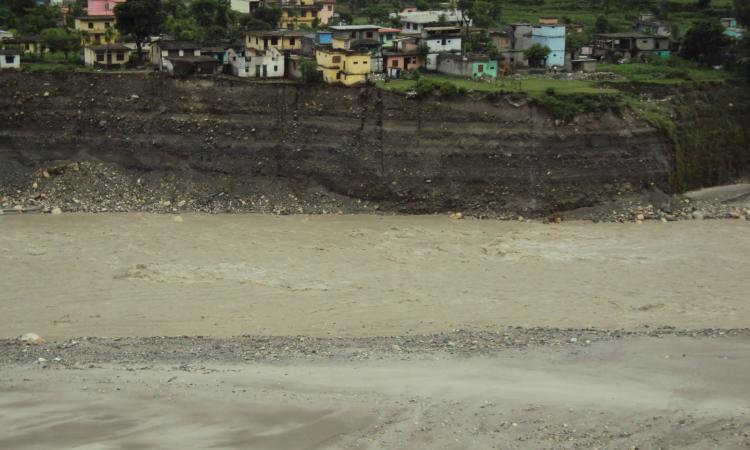
India builds dykes on Kaliganga, causes misery to Nepal
Floods wreaked havoc in Nepal's Darchula district in June 2013. The affected residents in the region blame this on the construction of dykes and embankments on the Kaliganga river in India. The Indian government has unilaterally taken up flood protection measures in the Indo-Nepal border, resulting in the river changing its course and flooding Nepal.
'Ganga loaded with Superbugs'
UK's Newcastle University and the Indian Institute of Technology, Delhi have found that the Ganga river is filled with multi-drug resistant superbugs, including the deadly NDM-1 virus. The levels of the superbugs in the Upper Ganga basin were about 60 times higher during the annual pilgrimage season in May and June. The likely cause for the environmental transmission of the bugs and their genes is the discharge of untreated sewage into the river.
Economic slowdown affects industrial water usage in Pune
The water quota of industries in Pune district remains unutlised during the financial year 2012-13 due to economic slowdown. Only 29.89 million litres per day (MLD) of water was utilised for industrial purposes from Pavana dam, against the earmarked total of 31.1 MLD. Irrigation officials report a 10% dip in the number of applications received for this year for utilising water from Khadakwasla and Pavana dams for industrial purposes.
Wells found contaminated near ISRO unit
Around 40 wells near the unit of Indian Space Research Organisation (ISRO) in Keezhmadu, Kerala have been found polluted with ammonium perchlorate used in rocket fuel. The contaminated water could affect the production of thyroid in the person consuming it. The cause of contamination and its extent is yet to be known. However, the District Collector has announced that 500 litres of water will be supplied every day to the residents of Keezhmadu for their domestic requirements.
100 nilgais died in Agra drinking toxic river water
Nearly 100 nilgais died in Saurai in Agra after drinking contaminated water from the Karvan river. Villagers living around the river blame factories in Hathras and Aligarh for discharging effluents in the river and turning it poisonous. Dissolved oxygen levels in the river samples were 1.5 mg/l as against the prescribed limit of 0.5 mg/l. The river water was enveloped in pink scum, indicating the presence of toxicants.
This is a weekly roundup of important news from February 16-22, 2014. Also read last week's policy matters updates.